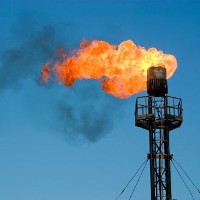Non-CO2 gases and ambitious climate targets
The need to reach zero or even negative CO2 emissions means that there is increasing attention on the non-CO2 greenhouse gases, which could become the lion’s share of the remaining emissions.
Enhancing the Greenhouse Gas and Air Pollution Interactions and Synergies (GAINS) model, and related databases, MAG revisited the feasibility and economics of achieving deep cuts in non-CO2 greenhouse gas emissions. For methane emissions, the new insights reveal important contributions from global oil production and extended shale gas extraction in the USA and Canada, which are still neglected in many assessments. Combined with increased coal production in China, these activities would significantly contribute to the expected doubling of global methane emissions by the mid-century, unless effective action is taken.
Technical measures are available to reduce global anthropogenic methane emissions to about half of current levels. Some reductions will occur as a side-effect of the phase-out of fossil fuels, an aspect that needs further research, in view of the new findings regarding the higher emissions from oil and gas operations. The agricultural sector also has an important role to play in future reductions. As many of the mitigation measures involve recovery and re-use, external factors, such as the future price of gas, could have significant effects on the future costs of reducing methane emissions and the need for further policies to stimulate such measures.
With this work, MAG contributed to the Arctic Monitoring and Assessment Programme 2015 Assessment of the Arctic Council; the work of the Task Force on Hemispheric Transport of Air Pollution of the Convention on Long-range Transboundary Air Pollution; and the Climate and Clean Air Coalition.
Collaborators
Imperial College, UK
Met Office, Hadley Centre, UK
Andlinger Centre, Princeton, USA
CICERO, Norway
Finnish Environment Institute, Finland
Council on Energy, Environment and Water (CEEW), India

Research program
Related research


